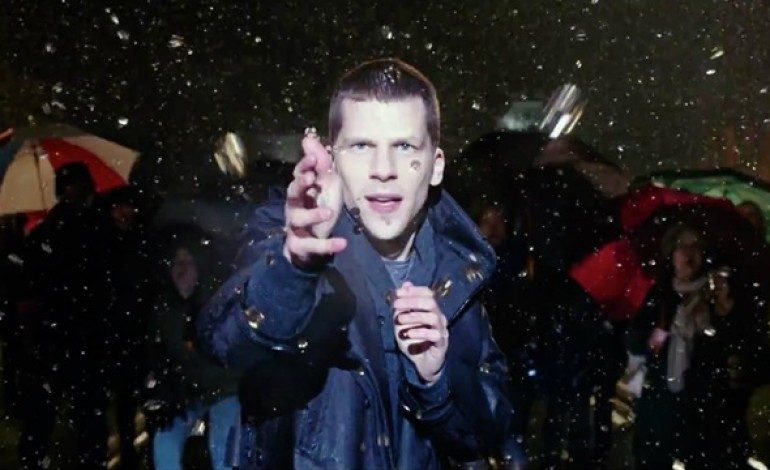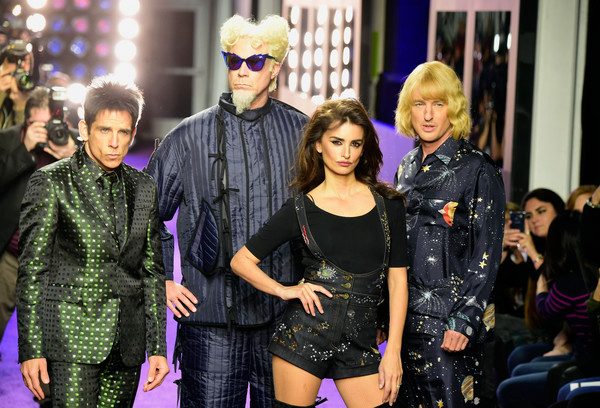

The 2016 Movie Year will probably be known for several things. The year of the Summer of Disappointments. The year of Too Many Comic Book Movies – even though no one says anything about how many cartoons are released each year; our standards are so low that even Trolls is Certified Fresh.
But it’s also a year where we’ve had a bevy of sequels that have been commercial and critical disappointments. From Independent Day: Resurgence to Inferno to The Huntsman: Winter’s War (which I already wrote a piece on) to Now You See Me 2 (and its interminable card toss sequence), these movies haven’t captured our imagination like their predecessors have. It’s hard to pinpoint a specific reason why – in some instances, it’s because the new movie adheres too strongly to the formula while in others, it’s because it deviates too much from it. So let’s run down some of this year’s most notable sequels (and representatives of their genres) to see how/why they failed – the comedy Zoolander No. 2, the horror Blair Witch, and the action Jack Reacher: Never Go Back.
Comedy: ZOOLANDER NO. 2
Be forewarned Bad Santa 2. Trying to do a sequel a decade-plus hence is a next-to-impossible undertaking, unless you’re Richard Linklater with the Before series, Hal Hartley with the Grim Family Saga, or … I’m sure there are others. Over the past several years’ journey throughout nostalgia, we’ve seen it fail for dramas (Wall Street: Money Never Sleeps (1987 –> 2010) is still probably Oliver Stone’s worst movie, even worse than Snowden), as well as comedies (Anchorman 2 barely pulled it off while the less said about Dumb and Dumber To the better.) And Zoolander No. 2, the 2016 sequel to the 2001 eventual cult classic, was yet another that just missed the point.
The biggest weakness with most comedy sequels regardless of when they’re made is that they end up repeating the same jokes as the first movie – yet this also ends up being their biggest strength. With most comedies, we don’t care about the characters as characters, we care about the characters as joke delivery systems. We don’t want to see them do different things, we don’t want to see them grow, we want to see them in the same comedy wheelhouse where we met them. Even great comedic performances, which I would say Ben Stiller’s Derek Zoolander falls under, are defined by the gags more than the journey.
Every genre certainly bears some repetition – it makes sense, why mess with a successful formula? – but with comedy it’s more essential because there’s rarely anything else to the films but the jokes we like. It also explains why “part twos” are traditionally rushed so quickly into production. Studios have to capitalize on that relatively brief moment when the gags are still fresh and floating around in the zeitgeist (usually shortly after the initial film hits the home market), but before they have worn out their welcome due to people repeating the quotable lines to the point they become stale.
When you take that limited window and try to stretch it to 15 years, you get the mess that is Zoolander No. 2. The first one was born from satirizing model/fashion culture so it had a premise on which to drape itself. The sequel, lost most sequels, had to rely on past glories rather than update its fodder, which speaks to yet another crucial problem in comedy sequels: evolution. Comedy has a greater tendency to change over a shorter period of time than other genres. A good car chase is a good car chase, a good fright is a good fright, but with a comedy, pacing, timing, subjects for ridicule all change relatively frequently, there’s a limited shelf-life for ‘topical’ references, and people can “age” out of certain types of humor – there’s a reason it’s called juvenile. The best comedy writers and performers evolve with the times (and I’d include Ben Stiller in that group), but we’ve seen time and time again with these sequels that it’s hard for know where to fit in between the two worlds. Do you play to a 2016 audience and the new comedy flavors, or to a 2001 audience and hope to capitalize primarily on greatest hits-style nostalgia?
Yet for all its flaws, Zoolander No. 2‘s greatest sin was overexplaining the jokes that worked in the original to a point of condescension. In the original, Derek Zoolander’s stupidity was accepted as part of the character, we didn’t need people constantly telling us that he’s stupid because we understood he was, and everyone in his universe was. Yet in this one, we’re constantly being told that he’s an idiot; as though we couldn’t pick up on that fact. One of the most memorable gags in the first movie is that Zoolander’s modeling faces all look the same but people accept them as different, as though fashionistas understand a language that us normals cannot. In this, his images are run through a computer program where they analyze the curvature of each Zoolander eyebrow thus quantitatively providing us with ‘science’ behind it. (We didn’t need midichlorians the first time, we don’t need them now.) Even the moment from the first one where Zoolander’s Magnum face stops the throwing star in midair is no longer some absurdist bit of random comedy, but ends up becoming some Force-level power that he and his son can use as a form of telekinesis. While some comedy sequels can overcome these flaws, Zoolander No. 2 is not alone in falling into these traps. Be forewarned Bad Santa 2.

